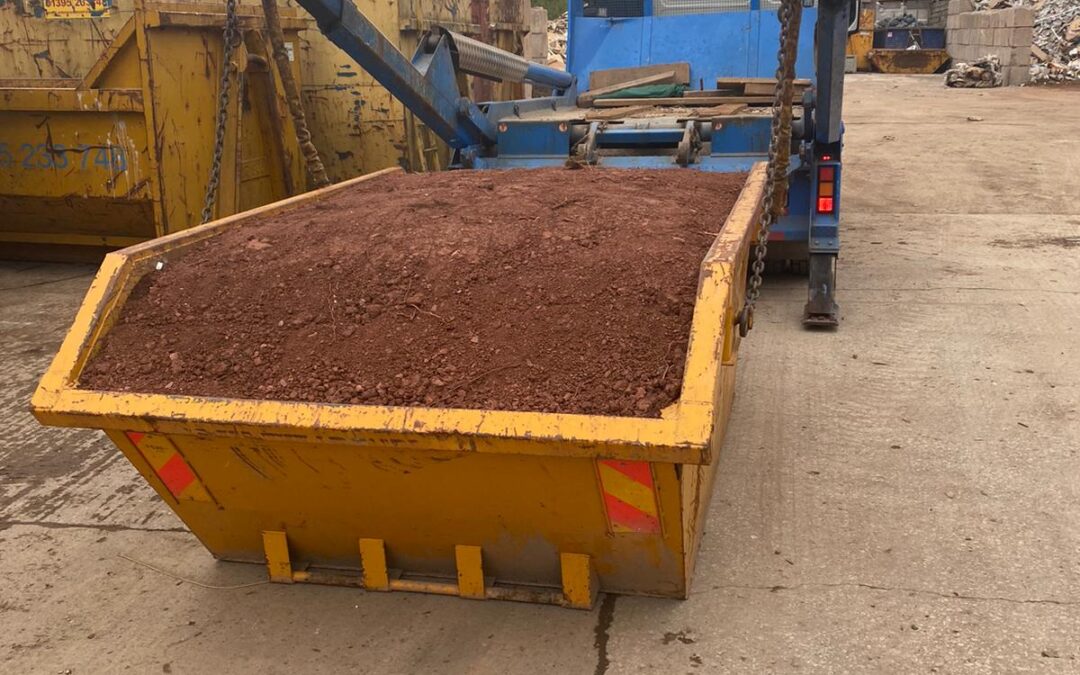
SKIP HIRE IN DEVON – HOW TO LOAD THAT PERFECT SKIP!
With hundreds of skips coming and going each week from EMS you wouldn’t believe the way some of the skips are loaded! So here’s a lesson in how to load a skip efficiently. Believe it or not, it will help you get more for your money.
If you want to save money on your renovation project, you need to ensure that you load your skip efficiently. If you overfill your skip you could face a fine. To get the most value for your money follow our tips for filling a skip.
ORGANISE YOUR WASTE
Before placing any items into your skip, you should separate your waste into the following categories (unless of course there’s only one material being disposed of such as inert waste)
FLAT ITEMS SUCH AS –
Cardboard
Styrofoam
Paper
Wooden veneer
TESSELLATE OBJECTS SUCH AS –
Bricks
Tiles
Worktop panels
BULKY ITEMS SUCH AS –
Furniture
Cupboards
Wardrobes
LOOSE DEBRIS SUCH AS –
Sand
Gravel
Soil
BE AWARE OF ANY PROHIBITED ITEMS WHEN SORTING THROUGH AND LOADING YOUR WASTE. YOU MIGHT BE PENALISED IF YOU LOAD A SKIP WITH PROHIBITED ITEMS
PROHIBITED ITEMS INCLUDE –
WEEE waste (e.g. computers, mobile phones)
Medical waste
Batteries
Paints
Solvents
Explosives
The removal of these items requires specialist services. Give us a call if you have hazardous items to dispose of.
RIGHT LET’S START LOADING
FIRST LAYER – FLAT ITEMS
Make sure that all items are as flat as possible before loading the skip. This means flattening all cardboard boxes.
Begin loading the skip by placing your flat items at the base. You should try and fill the whole area as evenly as you can. These items will be compounded by your heavier items once they’re loaded.
SECOND LAYER – TESSELLATE ITEMS
Place tessellate items on top of the flat items, joining items together to make layers. So if you have a group of bricks for example, arrange them to complete a single layer of bricks across the base. Then, move onto a second layer and so on.
THIRD LAYER – BULKY ITEMS
Break down your bulky items into smaller pieces. For example the legs of a table should be removed from the tabletop. Most pieces of furniture should have some removable components.
Place the flattest items in the skip first. Then add the bulkier items. Try to fill all available space instead of stacking items on top of one another.
FOURTH LAYER – LOOSE DEBRIS
Fill the remaining pockets of space with loose debris. Pour the debris into any gaps or nooks that have formed from the bulkier items.
ADDITIONAL TIPS
Do not overfill your skip. An overfilled skip can be dangerous to transport and will usually land you with a fine. If you have followed the guidelines and are still unable to fit everything in your skip you will probably need to order a second skip. Give us a call or book online.
A handy tip to avoid these problems is to use some foresight and order a skip of the perfect size for your project. On our Skip Hire page you can see the measurements of our skips by length, height and width. There’s even a handy little guide using a commonly known car to give you a better idea of skip size. This should ensure you get the right skip for your job.
EMS Waste Services are an independent provider of Skip Hire, Recycling and Waste Management Solutions. We provide our range of services to both domestic and commercial customers across the UK. From skip hire for a small domestic project to large commercial site clearances. Contact us today to find out more about our services and for advice on your requirements.

Recent Comments